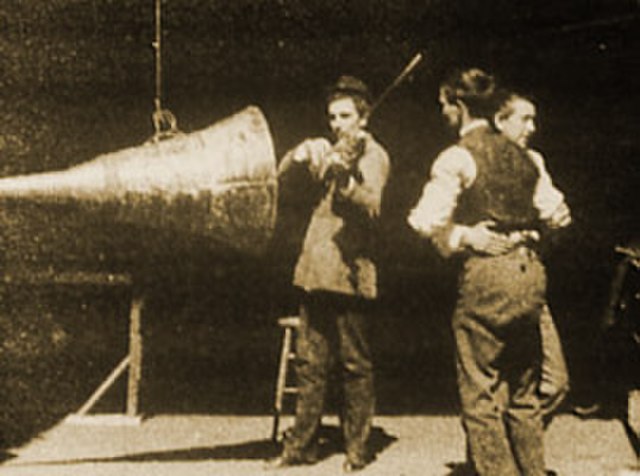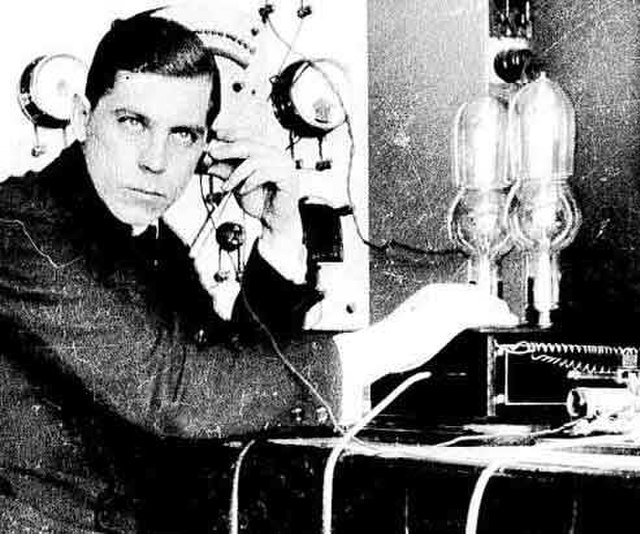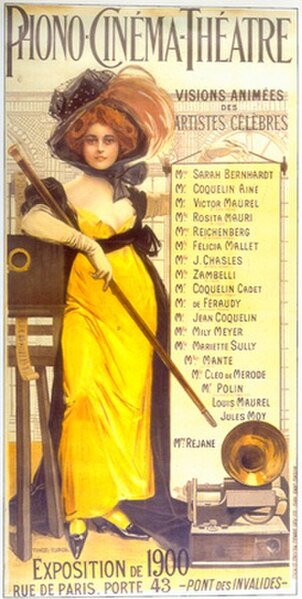Sound-on-film is a class of sound film processes where the sound accompanying a picture is recorded on photographic film, usually, but not always, the same strip of film carrying the picture. Sound-on-film processes can either record an analog sound track or digital sound track, and may record the signal either optically or magnetically. Earlier technologies were sound-on-disc, meaning the film's soundtrack would be on a separate phonograph record.
Edge of a 35mm film print showing the soundtracks. The outermost strip (left of picture) contains the SDDS track as an image of a digital signal; the next contains the perforations used to drive the film through the projector, with the Dolby Digital track (grey areas) with the Dolby Double-D logo, between them. The two tracks of the analog soundtrack on the next strip are bilateral variable-area, where amplitude is represented as a waveform. These are generally encoded using
A sound film is a motion picture with synchronized sound, or sound technologically coupled to image, as opposed to a silent film. The first known public exhibition of projected sound films took place in Paris in 1900, but decades passed before sound motion pictures became commercially practical. Reliable synchronization was difficult to achieve with the early sound-on-disc systems, and amplification and recording quality were also inadequate. Innovations in sound-on-film led to the first commercial screening of short motion pictures using the technology, which took place in 1923. Before sound-on-film technology became viable, soundtracks for films was commonly played live with organs or pianos.
1908 poster advertising Gaumont's sound films. The Chronomégaphone, designed for large halls, employed compressed air to amplify the recorded sound.
Image from The Dickson Experimental Sound Film (1894 or 1895), produced by W.K.L. Dickson as a test of the early version of the Edison Kinetophone, combining the Kinetoscope and phonograph.
Eric M. C. Tigerstedt (1887–1925) was one of the pioneers of sound-on-film technology. Tigerstedt in 1915.
Poster featuring Sarah Bernhardt and giving the names of eighteen other "famous artists" shown in "living visions" at the 1900 Paris Exposition using the Gratioulet-Lioret system.





